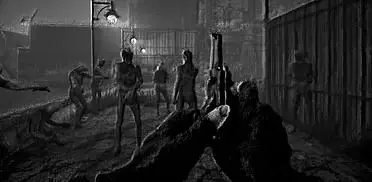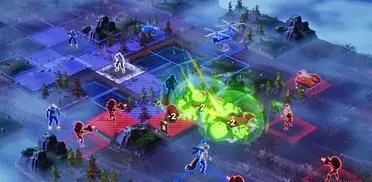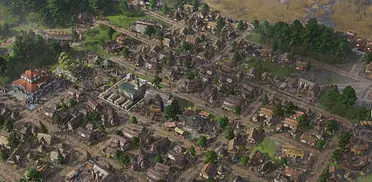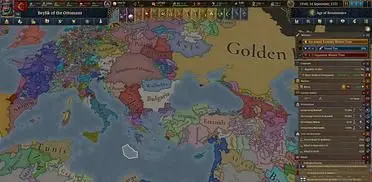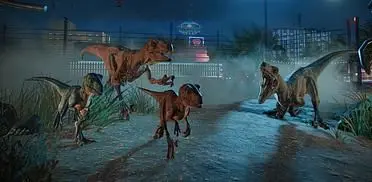Strategy Informer: Firstly, could you introduce yourself to our readers?
Johan Persson: My name is Johan Persson and I have been a long time wargamer, board gamer and former competitive chess player. A long long time ago I found interest in a variety of games, most of them being strategy games and of course a lot of them being wargames. What comes to mind especially is Sid Meier (for instance Pirates!, Railroad Tycoon, Civilization) and also many old wargames (Storm Across Europe, Theatre Europe, Third Reich and many games from SSI) and of course tons of other games. I am into developing deep but easy-to-use games that maintains the interest of the player beyond the first kicks of playing a fresh new game. I always felt that the turn based wargames have lagged behind since, despite superior technology, there are very few computerised turn based wargames you can play online and finishing in one session while having the same stability and depth that board games have. The goal is quality and balance rather than all flash and no substance.
Strategy Informer: We've heard about some of the features of Commander - Europe at War, could you give us more information on them?
Johan Persson: Although we’ve got a lot of the basics in place we are still refining features so anything I say may be subject to change once we start play testing! For example right now you can collect resources and repair damaged armies & build new ones. Currently every city produces a fixed number of resources, as does a factory complex. We’re enhancing the system to allow us to specify each city & factory complex by hand so that we can make Berlin far more productive than say Cairo. This allows us to add some of the smaller cities that were important for military or political reasons but which had to be left out before due to unbalancing the resource production.
The game is turn based & hex based, but it designed to be easy to play with a simple point and click interface. Although there will be a detailed model going on underneath, we want to make sure the player is fighting against the enemy army and not the UI!
Each turn you move your troops around the campaign map, rest them, replace casualties, launch assaults or re-deploy them. To move you click on a unit and the possible destinations are shown. You then select where you want to move to and if you are next to an enemy unit you may click on it to launch an attack. Combat calculations are split in to 2 phases and this is one of the key elements of gameplay. Every unit has a shock rating & a damage rating. Shock attacks reduce enemy morale & cohesion before damage is inflicted. For example a panzer corps would have a high shock attack value, which would disrupt the enemy & then damage is inflicted by both sides. Shock attacks are heavily effected by terrain, so the tanks shock attack works well in the open, but is ineffective against dug in troops. The shock attack also allows us to accurately simulate naval & air support. Air strikes & naval landing bombardments have high shock values but inflict minimal casualties. This means that to be effective air strikes & bombardments must be followed up with ground attacks, otherwise the troops you attacked will reform and recover. This is much more realistic than having an entire corps destroyed by air power of naval, which never ever happened!
Strategy Informer: What can you tell us about the graphical and physics features?
Johan Persson: We aim to produce an attractive 2D map, with attractive icons/counters for units, cities and other important locations, but the game is not going to be a 3D graphical extravaganza! The graphics are intended to do the job but not to win awards J.
Strategy Informer: What kind of support to you plan to give once the game is released?
Johan Persson: The game will not be released prematurely and will be patched until every feature in the game is working intuitively and as expected. "If something looks like a wheel then it should roll, not jump" and that is a similar motto I share with Slitherine. For the same reason, there will be no hasty or optimistic release date that 95% of the time is not kept anyways. Customer trust means much to us.
Strategy Informer: Can you tell us about the single player aspect of the game?
Johan Persson: As Commander - Europe at War is a strategy game it develops based on the player’s actions. The campaign is completely free form and players decide where to attack and when. Obviously some strategies will be better than others, but how WW2 develops is up to the player. There are multiple difficulty levels to give a range of abilities a good challenge.
Strategy Informer: Can you tell us about the multiplayer aspect of the game?
Johan Persson: We’ve included a host of multiplayer options - PBEM, Hotseat and Internet Play are all available. With Internet play, you can use the timer option playing everything from 1 minute per move (Super Blitz) to 5 minutes per move (Long Game). Some people would like to finish a game in one session and some would like to play without timer so it is their decision. Difficulty levels also apply to multiplayer games, which means you can give your beginner friend a nice handicap.
Strategy Informer: Can you give us an assessment of the health and long-term viability?
Johan Persson: Built in to all the calculations are random factors. These are balanced so they do not take over, yet do offer interestingly different results each time. This means the world will develop differently each time. The Ai will also have some random factors to prevent it being predictable making each game play differently. On top of this we’re doing everything we can to support the mod community. This is our first game so the toolset will not be perfect, but we are trying to keep as much data in text files so people can make changes to stats, graphics and maps without too much difficulty. Mods can add a lot of replay value to a game like this.
Strategy Informer: Could you tell us about the scenarios and units that will be featured in Commander - Europe at War?
Johan Persson: Scenarios range from 1939-1944, with one scenario for each year. This allows you to play the entire campaign, or start from the invasion of Russia or maybe DDay. The units you can command are all designed to have strengths and weaknesses. Infantry will be cost effective and good at defence, especially in woods and cities. Motorised infantry are more mobile and have a higher shock attack due to mobility and support weapons. Armour are very mobile, high shock, but suffer penalties when fighting in or into terrain such as woods, mountains and cities. Air units are great at softening up fortified positions, but need to work I combination with ground troops. Carriers are the king of the seas, along with battleships, but Destroyers are required to combat the submarine threat. Subs can take on capital ships, but need to do so in numbers and their main task is to harass enemy convoys. Bombers can be used to attack strategic targets and reduce production, while fighters can intercept and escort them. Commanders are special units that can only be deployed/attached to a ground units and then have morale and performance adjustments applied to the surrounding units.
Strategy Informer: As a gamer, what's your favourite part of Commander - Europe at War, what makes you proud to have helped create it and why is it a game strategy fans will want?
Johan Persson: There are a number of aspects I really love:
· The setting & scope. World war 2 is just such a great period with so much
interesting history, equipment and characters.
· The distinction between shock attack and fire attack that benefits
combined arms.
· The invisible subs that can lurk in the Atlantic like in real WW2 and be a
major headache until the very end.
· The research and focus system, which allows you to gamble by focusing in
one technology and suffer penalty in other techs.
· Terrain has a big and realistic effect on combat. Rivers really are string
points to defend, as are mountains and forest.
· Mods & scripting. Not only units, terrain and commanders but also the
general gameplay mechanics are included for scripting. You can edit how likely units are to retreat, how large the supply levels will be in the game, how much the experience of units will affect their performance, how large Dog Fight casualties are compared to other battles and much more.
Strategy Informer: What is the current release date for Commander - Europe at War?
Johan Persson: As mentioned above – when it’s ready J.
Strategy Informer: Is there anything you'd like to say to the Commander - Europe at War community before we wrap this up?
Johan Persson: I like to say that the cooperation with Slitherine is really producing a sum that is larger than the separate parts and we both share the same goal of creating a trust amongst customers, meaning you should take our word for it that the game will be stable and balanced already on release. If you want a game that has depth and stamina while being easy to use then you should consider Commander - Europe At War.
